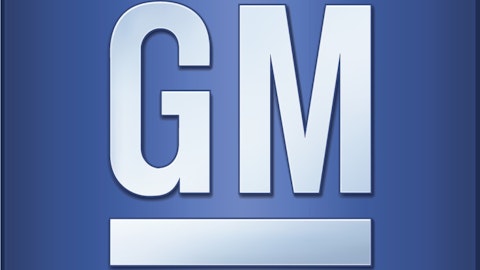In June 2012, India-based tiremaker Apollo Tyres made a bid to join the industry’s upper echelon, offering to acquire Cooper Tire & Rubber Co (NYSE:CTB) for $35 per share in cash or roughly $2.5 billion. The combination would make Apollo the world’s sixth largest tiremaker and add a strong presence in the U.S. While the original equipment tire segment is controlled by giants like The Goodyear Tire & Rubber Company (NASDAQ:GT), Bridgestone, and Michelin, the replacement tire segment is more competitive and is Cooper Tire & Rubber Co (NYSE:CTB)’s historical focus. With rising government regulations and large capital expenditures to look forward to, the industry is likely to continue its consolidation. So, should investors be looking at the sector?

Most passenger vehicles have four tires, so the industry obviously does better when auto sales are on the rise. The replacement market, though, is more a function of consumers’ disposable income and willingness to upgrade their wheels. Cooper Tire & Rubber Co (NYSE:CTB) built its formidable business in the latter segment by being cheaper than the industry giants and by partnering with retailers on private label brands.
In 2012, Cooper Tire & Rubber Co (NYSE:CTB) generated strong financial results and outpaced the industry with a 4% gain in domestic shipment volume. For the period, the company reported increases in revenues and adjusted operating income of 7.5% and 143.1%, respectively, versus the prior year. Despite general weakness in European markets, Cooper Tire & Rubber Co (NYSE:CTB)’s international segment also reported volume gains, as its recently purchased Serbian plant helped it to gain market share in the Eurozone. In addition, falling raw materials prices, down 7% on average for the year, led to a sharp increase in its operating margin.
With Cooper Tire & Rubber Co (NYSE:CTB) going private, the most logical sector play would be The Goodyear Tire & Rubber Company (NASDAQ:GT), one of the industry’s stalwarts, operating 52 manufacturing plants across 22 countries. The company also has a strong position in the retail arena through its national chains of consumer tire centers and commercial truck service centers. Due to heavy exposure to the weak European market, though, The Goodyear Tire & Rubber Company (NASDAQ:GT) had a relatively poor year in 2012, reporting declining unit volumes in three of its four geographical segments.
However, in FY2013, The Goodyear Tire & Rubber Company (NASDAQ:GT) has shown a spark, as higher tire sales in the domestic original equipment segment have mostly offset continued weakness in its European markets. For the six months of the year, the company reported an 3.1% decline in unit volume, but a 16.2% jump in adjusted operating income. Like Cooper, The Goodyear Tire & Rubber Company (NASDAQ:GT) has benefited from declining average prices for raw materials, leading to a wider operating margin. In addition, the company has improved its cost structure by freezing some of its pension plans and reducing its overall plant capacity.
Following the Oracle
Despite rising margins in 2012, the tire industry is a commodity product business that is susceptible to volatile moves in raw material prices and cheap competition from China. Indeed, the federal government had a special tariff in place on tire imports from China until September 2012, due to allegations of product dumping by Chinese competitors. As such, investors will likely find better returns by focusing on the major customers of the tiremakers, namely the automakers, which are benefiting from lower prices and better negotiating positions.
The company with the greatest operating leverage is General Motors Company (NYSE:GM), due to the positive cost structure changes that emanated from its bankruptcy proceedings. It is also well positioned for the future, with leading market shares in fast-growing economies like China and Brazil. The company has increasingly benefited from an ability to raise average prices by convincing customers to trade up to its higher priced and more profitable crossover and SUV models. While General Motors Company (NYSE:GM)’s overall unit volumes have been flat in FY2013, the company has achieved growth in its focus markets, including North America, China, and Brazil. With the April 2013 acquisition of former subsidiary Ally Financial’s Latin American and European operations, the company is well positioned with greater customer financing programs, which should support its growth initiatives.
The bottom line
India-based Apollo Tyres may be betting big on tires with its blockbuster purchase, but that doesn’t mean that investors should follow suit. With raw material prices eventually headed back up, the tire manufacturers’ operating margins are sure to decline. A better bet is the auto manufacturers that can take advantage of price competition in the tire industry and have better pricing power with their end customers. Since the industry’s future is heading towards China, the company with the right formula for success is General Motors Company (NYSE:GM).
The article Should You Follow India Into the Tire Biz? originally appeared on Fool.com and is written by Robert Hanley.
Robert Hanley owns shares of Cooper Tire & Rubber. The Motley Fool recommends General Motors. Robert is a member of The Motley Fool Blog Network — entries represent the personal opinion of the blogger and are not formally edited.
Copyright © 1995 – 2013 The Motley Fool, LLC. All rights reserved. The Motley Fool has a disclosure policy.



